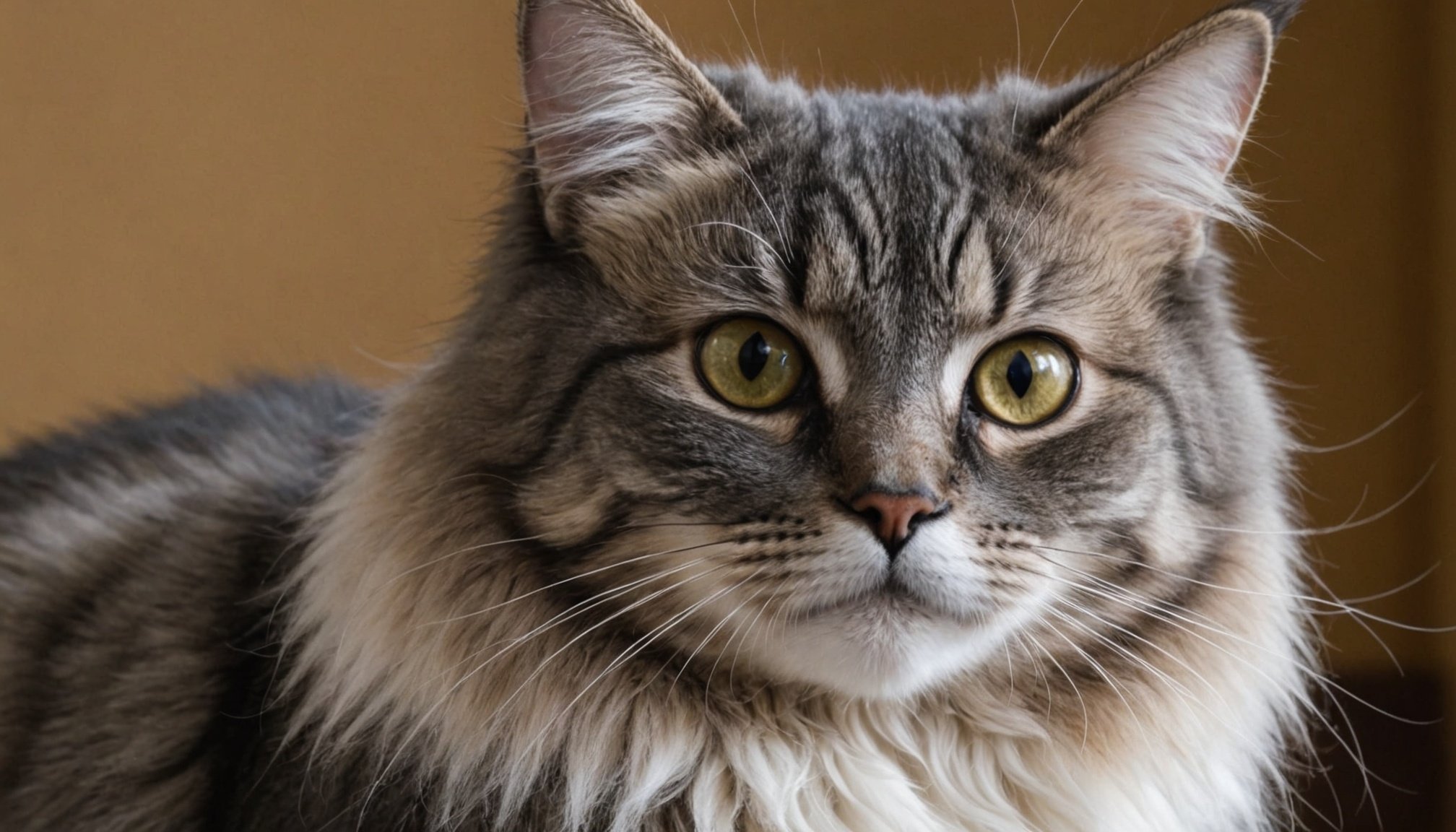When it comes to the loving care of your long-haired cat, grooming is not merely a luxury—it’s an essential aspect of their health and wellbeing. These elegant creatures, with their flowing coats and regal demeanor, require regular attention to their fur to prevent common issues such as mats and tangles. As owners, understanding the ins and outs of maintaining their fur is key to ensuring their comfort and health. Here, we delve into the best practices for grooming your long-haired feline friend, providing you with the comprehensive tips and techniques that will keep their coat looking pristine all year round.
The Importance of Regular Brushing
Brushing your cat’s fur is more than a sheer act of affection. It’s an integral part of their routine that will help in maintaining a healthy coat and skin.
Additional reading : Seamless introductions: expert tips for harmonizing your ferret with your feathered companion
Why Brush Regularly?
Long-haired cats are prone to tangles and mats, particularly if their grooming needs are neglected. Regular brushing helps in:
- Reducing Shedding: For households concerned about fur on furniture, consistent brushing minimizes shedding and keeps your home cleaner.
- Preventing Mats: Mats can be painful, causing skin irritation and infections if not promptly addressed.
- Distributing Oils: Natural oils secreted by your cat’s skin help keep their fur glossy and healthy. Brushing aids in the even distribution of these oils.
Choosing the Right Tools
To effectively groom your pet, having the right tools is crucial. Consider investing in a quality comb or brush specifically designed for long-haired breeds. Stainless steel combs are effective at detangling and preventing mats, while slicker brushes are excellent for removing loose hairs.
In the same genre : How can you effectively train your rabbit to use a litter box?
How Often Should You Brush?
The recommended frequency varies with individual cats, but a general rule is to brush them at least three times a week. Pay extra attention during shedding seasons—spring and fall—when their coat undergoes significant changes.
Managing Common Grooming Challenges
Grooming a long-haired feline isn’t without its challenges. However, with the right strategies, these can easily be managed to keep your furry companion comfortable.
Tackle Mats with Care
Mats are dense clumps of tangled fur that can form quickly and become tight against your cat’s skin. To deal with mats:
- Use a Mat Splitter: A mat splitter or dematting tool can gently loosen knots without painful pulling.
- Detangle With Patience: Start at the end of the mat, gently working your way toward the base. Never pull too hard, as this can hurt or stress your pet.
- Seek Professional Help: If mats are severe, don’t hesitate to contact a professional groomer.
Bathing Your Cat
While not frequently necessary, occasional baths can help to keep your cat’s coat clean and free from oils and dirt. Here’s how you can help:
- Choose a Gentle Shampoo: Always opt for shampoos formulated specifically for cats.
- Have a Drying Plan: Post-bath, gently pat them dry with a soft towel and allow them to air dry in a warm room.
Addressing Skin Sensitivity
Some long-haired cats may have sensitive skin that requires special attention. Look for signs of irritation or dryness and consult a vet if these persist. Providing a balanced diet rich in omega fatty acids can also aid in maintaining healthy skin.
Tips for a Stress-Free Grooming Routine
Establishing a stress-free grooming routine can make the experience enjoyable for both you and your cat, paving the way for a strong bond and a beautifully maintained coat.
Start Young
Introducing grooming to kittens allows them to become accustomed to the process early on. Start with short sessions, combining brushing with treats and gentle words to create a positive association.
Create a Calm Environment
Choose a quiet, comfortable space free of distractions. Soft music or nature sounds can help soothe your cat during grooming sessions.
Use Positive Reinforcement
Reward your cat with treats or playtime after each grooming session. This reinforces good behavior and ensures your cat looks forward to their grooming routine.
Observe Their Mood
Cats have their moods, and it’s essential to be sensitive to them. If your cat appears agitated or unwilling, it might be best to try later rather than force the session.
Keep Sessions Short
Particularly for those starting, keep grooming sessions short and sweet. Gradually increase the time as your cat becomes more comfortable.
When to Seek Professional Grooming Assistance
While regular at-home grooming is vital, there are instances where professional groomers are the best option for maintaining your cat’s coat and overall health.
Complex Grooming Needs
Certain breeds, such as Persians or Maine Coons, may require more advanced grooming techniques beyond the average owner’s skill set. Groomers are equipped to handle these challenges effectively.
Health Checks
Professional groomers often offer more than just brushing and bathing—they can spot early signs of potential health issues, such as lumps, bumps, or parasites, that you might miss.
Allergy Management
If anyone in your household suffers from allergies triggered by cat dander, regular professional grooming can help manage and reduce allergens within the home environment.
Time Constraints
For those with busy schedules, delegating the grooming process to a professional ensures your cat receives the care they need without compromising your time.
Addressing Behavioral Issues
If your cat displays aggressive behavior during grooming, professionals have the experience and techniques to handle difficult situations without causing stress to your pet.
Grooming your long-haired cat is a meticulous yet rewarding endeavor that enhances your pet’s health and the bond you share. By incorporating regular brushing, being vigilant about mats, and understanding when professional help is needed, you ensure that your feline friend’s fur remains elegant and their skin resilient. Implementing these practices not only contributes to your cat’s comfort but also ensures they continue to grace your home with their beauty and charm. In embracing these grooming tips, you celebrate the uniqueness of your feline companion while providing the care and love they deserve.










